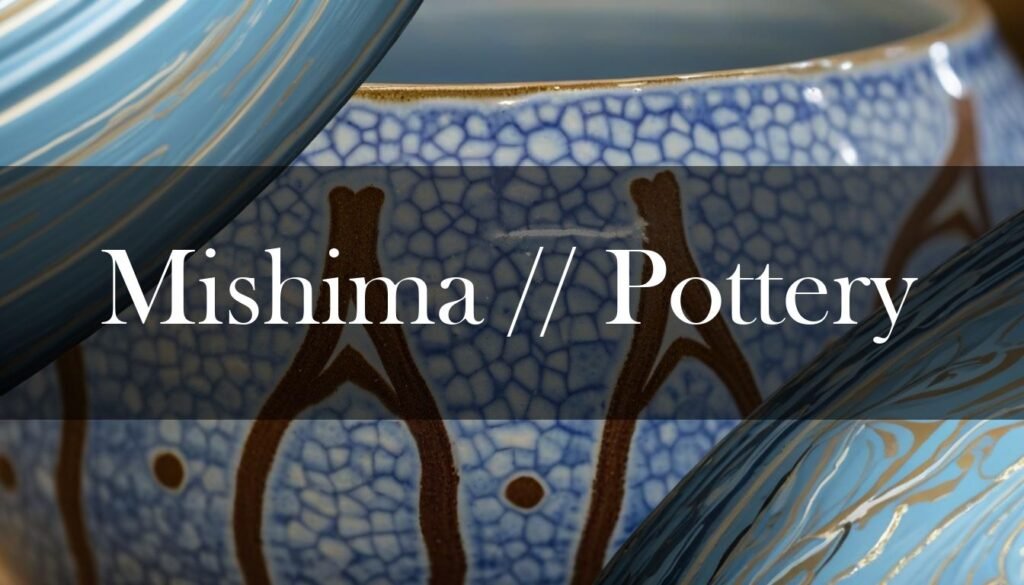Mishima, a captivating pottery technique with roots in Korea and a beautiful evolution in Japan, involves inlaying contrasting slip into delicate, carved designs. It’s like sketching on clay, then filling those lines with color to bring the piece to life! Choosing the right clay and tools, and understanding the process is key to creating stunning Mishima pottery. You may also enjoy this guide to Mishima Pottery.
Selecting the right clay body is crucial for Mishima. Think about contrast! A white porcelain clay paired with a dark slip creates a striking visual. Stoneware, with its range of colors, offers flexibility in design, but make sure your chosen clay and slip have compatible shrinkage rates to avoid cracking during firing. Porcelain is great for contrast but has a higher shrinkage rate (around 12-15%). Stoneware, with a shrinkage rate of 10-13%, is generally more forgiving. Before committing to a clay body, test it with your chosen slip. Create test bars, measure them at different stages – wet, dry, bisque, and glazed – to ensure they play well together. Chris Campbell emphasizes that mismatched shrinkage rates lead to cracking or warping. A smooth clay surface is also vital. Any bumps will interfere with the inlay process.
“Selecting the right clay and slip involves carefull consideration to prevent cracking, warping, and other issues during the firing process.”
The carving stage of Mishima requires precision, so having the right tools can make all the difference! Korean Atelier Detail Carving Tools, made of high-carbon steel, are designed for intricate work. DiamondCore Fine Point Carving Tools are also great for creating crisp lines in leather-hard clay. Traditional Japanese tools like the Takebera (a bamboo knife) and Yumi (a bamboo trimming wire) can also be used. The carving is best done when the clay is medium to stiff leather-hard. Once the design is carved, apply the slip or underglaze, making sure to press it into every nook and cranny to avoid air pockets.
- Korean Atelier Detail Carving Tools are great for detail work.
- DiamondCore Fine Point Carving Tools work well for crisp lines.
- Takebera and Yumi are traditional Japanese carving tools.
After the slip dries to a leather-hard state, carefully remove the excess. Metal ribs are great for scraping the surface to reveal the inlaid design. A damp sponge can also be used, especially if you’ve applied wax resist. Julia Galloway even suggests running the pot under water for hard leather-hard pieces. For those final touches, very fine steel wool works wonders once the piece is bone dry. You may also find this guide to pottery carving useful.
“Experiment with different tools to get a feel for what suits you best. Different tools create different effects.”
Julia Galloway
When it comes to slip recipes, a common approach involves using a porcelain or white stoneware clay body for contrast. A good starting ratio is 1 part clay to 1.5 parts water (by weight). Additives like sodium silicate can help reduce the amount of water needed, which minimizes shrinkage. Colorants, such as cobalt carbonate for blue, can be added to the slip. Remember, testing is key, as the final color can vary depending on the firing. Mishima offers a beautiful way to bring intricate patterns and designs to your pottery! Whether you’re drawn to traditional floral motifs or geometric patterns, experimenting with different techniques and tools is key to developing your unique style.





